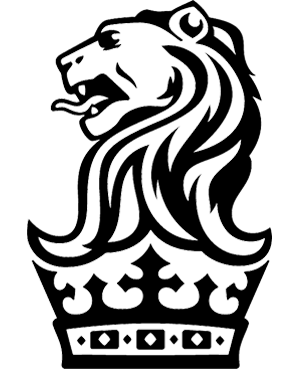Tags
#Meetings
Start meetings with memos, not PowerPoints
Amazon founder Jeff Bezos removed PowerPoint presentations from meetings in 2004 because "you can hide a lot of sloppy thinking behind bullet points." Instead, presenters prepare a six-page memo for meetings. Memos, unlike PowerPoints, force authors to take the time to truly understand the scope of their ideas.
Often, a memo can take two weeks to create as it is written and rewritten, shared with colleagues for feedback, set aside for a couple of days, and then edited again.
To ensure people read the memo, the first thirty minutes of the meeting are dedicated to reading it in silence. Attendees write comments and ideas in the margins while the author anxiously waits. Once the memo has been read, an "elevated discussion" begins where ideas can wander and grow toward the best solution, even if that means going longer than expected.
Make your meetings more effective
First, ask yourself if you really need to have a meeting. If the answer is yes, and you really need that in-person feedback, Steve Jobs at Apple expected you to follow these three rules:
- Only invite three to five people and know exactly each person's role and responsibility. Anything more is counterproductive and anyone who just needs to know what was discussed can be sent the notes or transcript after.
- Always set an agenda and don't make it more than three items. Stay focused and make sure each item is connected to the overall purpose of the meeting.
- Keep meetings to 30 minutes, no more. Attention spans are short and to sustain a meaningful, analytical discussion is difficult. Come organized, come prepared, and break up your key items into digestible chunks.
Create a safe space to have honest conversations about your culture
Around LEGO offices, employees gather in areas with campfires built out of LEGOs to signify that they are not having a regular work meeting but one that focuses on sharing ideas, opinions, and concerns about the company's culture. While some campfire sessions provide employees time to share what they have learned from their successes and failures of the day, others use the time to brainstorm how to make cultural shifts in the company, like developing a more diverse employee candidate pool.

Make meetings purposeful
LEGO has built their culture around keeping meetings focused and solution-oriented with the following:
- Shortened meeting times. Meeting lengths are defaulted to 25 minutes for 30-minute meetings and 50 minutes for 1-hour meetings.
- Clear expectations. Meeting templates require the organizer to fill out the meeting's purpose, agenda, and expected outcome. This helps attendees prepare for the meeting and helps the organizer determine if the meeting is necessary or if an email will suffice.
- Preparation requirements. Time is not spent on reviewing documents shared beforehand. Instead, all attendees come prepared, pre-reading the materials and noting questions to explore further.
Always start your day with a lineup
Through calm or crises, one meeting that remains constant at The Ritz-Carlton is the daily lineup. This 20 minute meeting, which is held by all teams from cleaning crews to executives, was introduced to inspire and unify staff while also emphasizing the importance of the company's Gold Standards.
How it works:
- A Commitment to Quality sheet is sent out to all Ritz-Carlton staff that focuses on one of the 12 service values.
- The team lead shares a WOW story that focuses on that day's service value.
- The staff share personal stories of how they have delivered on that day's service value.
- The team shares details regarding any guest preferences and problems.
- Anniversaries and milestones of employees across the entire hotel are recognized.
- Fun facts about the company and hotel performance metrics are shared.
- The meeting concludes with someone reciting an inspirational quote or song lyric.
Reserve the first 10 minutes of a meeting to have fun
Whether its talking about your weekend, making jokes, holding a team building exercise, or even lovingly "razzing" somebody else, Southwest likes to take the first 10 minutes of a meeting to have some fun and to build a stronger culture. Southwest CEO Bob Jordan believes that "the 10 minutes of fun serves to build relationships, and there's a camaraderie that comes out of that that is an accelerant to doing the business."
This doesn't mean that nothing serious gets done. Every meeting is expected to have an agenda and end with clearly assigned next steps for each person to take action on. No one should walk away from a meeting saying "Let's study that more."
Increase alignment by circling back with your staff
While leaders may think they are aligned with their staff once a decision is made, follow-ups give "people a chance to come back to you and tell you if they still have questions or concerns." Former Umpqua Bank CEO Ray Davis often found that staff would say they agreed or understood in meetings because "that's what they thought you wanted to hear." Ray made it a habit to follow up with his staff personally four hours after any discussion to ask:
- Are you okay with our discussion?
- Is everything cleared up?
- Is anything bothering you?
Start every day with a motivational moment
At the beginning of each day, every Umpqua team is required to set aside a few minutes to recharge their batteries and have some fun. These motivational moments can be spent doing anything except talking about operations and are meant to encourage staff to think differently, keep an open mind, and work together. A few examples of motivational moments at Umpqua include:
- Thinking outside the box: Ask your team to cross out six letters from this thread of letters so that the remaining letters spell a familiar English word: BSAINXLEATNTEARS
- Simon Says: Play a fast-paced game of Simon Says. If everyone succeeds, praise your team's ability to stay focused. Otherwise, remind them of the importance of staying focused and that you want everyone to remain standing.
- Moving forward: Have everyone sit on chairs with wheels and ask them to roll backward several feet and then forward. Make the point that it is always more challenging to move forward, but moving forward is the only way to "continually grow and experience new and exciting things."
- What's on your back?: Tape a blank piece of paper to each person's back and have everyone write one positive quality about that person. In the end, everyone walks away with a list of compliments from their team members.
- The power of communication: Using small LEGO kits, have two team members stand back to back—one with the pieces and the other with the instructions. See if the person with the pieces can assemble the kit by only listening to the instructions.
- Getting to know you: Have each team member write down an unknown personal fact about themselves. Collect the responses and read them aloud to see if the team can guess which goes with which person.
- Quality check: Have your team look at your work area as a whole through the eyes of a customer and discuss how a customer would perceive it.
- Culture word search: Create a word search with words that embody your company's culture.
- Play it loud: Play an upbeat song and have everyone stand up and dance or do a few aerobic exercises.
- Who are you? Using this list of roles, have your team write down the name of the person who embodies each role. Afterward, discuss how it is essential that "all team members assume most of the roles on the list at one time or another."
- Build a castle: Tell the following story: "Three bricklayers were asked what they were doing. The first replied, "I'm laying bricks." The second said, "I'm earning a living." But the third said, "I'm building a castle." Then go around and "ask each team member for a brief phrase that personally describes how they contribute to building a great company."
- First impressions: Have each team member draw a doodle on a piece of paper using a pencil with an eraser. Then, have them erase their drawings. Comment how every action, no matter how insignificant, leaves an impression and can never be completely taken back.





